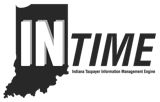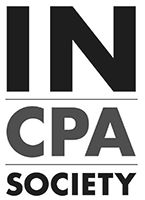Depreciation: Why You May Not Want to Expense It All At Once
November 26, 2018 Author: Joe Paulson, CPA, Partner, Compass Pointe CPAs

In December 2017, the House passed the Tax Cuts and Jobs Act, which brought about the most sweeping tax reform since the 1980s. The bill includes significant tax law changes for both businesses and individuals. Because of the breadth and depth of the various tax law changes brought about by the Act, it is difficult to efficiently and effectively discuss the impact of these changes on all circumstances in just one or two paragraphs. This is part of an informative and meaningful series to help you understand how the Act impacts your business or individual tax situation.
In this third installment on the Tax Cuts and Jobs Act, we will look briefly at the Act’s updates to depreciation and provide some countercultural explanations why you may or may not want to tug so hard on first-year depreciation.
While much of the lingo and basics associated with depreciation (such as bonus depreciation, Section 179 election, etc.) did not change with the Act, many of the thresholds and dollar figures did change. For 2018, a taxpayer may expense up to $1,000,000 under Section 179 with a phase-out threshold of $2,500,000. The Act did expand the definition of “qualified property” under Section 179 to now include property such as nonresidential roofs, HVAC and alarm/security systems.
Also, for assets put in service after September 27, 2017, the additional first-year depreciation deduction (bonus deprecation) is increased from 50 to 100 percent. Bonus depreciation now applies to both new and used property. Previously, it was limited to new property.
Now for the reasons why you may not want to tug so hard on first-year depreciation elections:
- Your business may want to take advantage of the Acts’ new Qualified Business Income Deduction (QBID). If you eliminate your qualified business income in the first year, you have effectively eliminated the opportunity for the 20 percent deduction. Also, if you incur a net loss when looking at net qualified business income, that loss carries forward to the following year and you must make enough income in the following years to make up this loss before you become eligible for the QBID.
- If you purchase assets with debt, we highly recommend staying away from fully depreciating your purchased assets in the first year. Why? Because you could create a cash flow issue in future periods. Your business must generate enough profit to cover the tax on that profit and the principal paydown on the loan every year. The interest is deductible. If you smooth out your depreciation over the assets’ holding period, some of your depreciation can cover this principal paydown and better link your taxable income with your cash flow.
WARNING: Electing Section 179 is much more flexible than electing bonus depreciation. Bonus depreciation is elected by asset class. Section 179 is elected by asset and you can elect a specific dollar amount for that asset.
For more information, contact Compass Pointe CPAs at 317.881.6670.
Related Series on Tax Cuts and Jobs Act
Payroll Withholdings: A Warning to Dual Income Households
IRA Required Minimum Distributions Meet Qualified Charitable Distribution
Qualified Business Income Deduction: Complicated Yet Impactful







